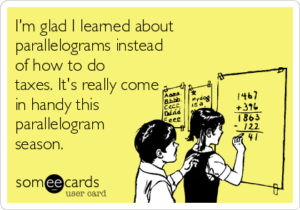 Most of us have never had any formal education about taxes. Not in high school, college or even graduate school programs. Tax season comes every year so maybe we should be more prepared. The first thing you may wonder is, what are all these documents I am receiving in the mail? As I am always looking to financially educate my millennial peers, I want to share with you what some of these documents are for.
Most of us have never had any formal education about taxes. Not in high school, college or even graduate school programs. Tax season comes every year so maybe we should be more prepared. The first thing you may wonder is, what are all these documents I am receiving in the mail? As I am always looking to financially educate my millennial peers, I want to share with you what some of these documents are for.
Common Tax Documents
- W-2: This comes from your employer and lists what you were paid along with any taxes withheld through the year.
- 5498: If you have an Individual Retirement Account (IRA) this form will list any contributions, rollovers, Roth IRA conversion and Required Minimum Distributions (RMDs).
- 1099-R: If you take money out of an annuity, retirement plan, IRA or certain other accounts, this form reports those amounts.
- 1099-DIV, 1099-INT, 1099-B: If you have investments that are in non-retirement accounts, these forms will tell you all the taxable capital gains and dividends paid, interest paid or proceeds of sale of stocks.
Now that you are armed with the knowledge of what these common documents are, here are a few other helpful hints:
- Put together a checklist. If you are working with a tax advisor, he or she will likely send along a checklist to help you get organized. Use this list, or make your own. Include items that you have addressed in previous years or add new items. The list will become a handy resource to review annually when it’s time to gather what you need.
- Here are some common retirement plan contribution limits for 2017. You may want to talk with your financial advisor and tax advisor to see if you are eligible to contribute to an IRA or Roth IRA.
Contribution Limits for 2017
401(k), 457 and 403(b) Elective Deferral Limit $18,000
Age 50+ Catch-Up for 401(k), 457 and 403(b) $6,000
Traditional and Roth IRA $5,500
Age 50+ Catch-Up for IRA and Roth IRA $1,000 - What is Form 1040? Form 1040 is the standard form that you use to file your annual tax return. It contains information about your income (wages, salary, taxable interest, capital gains, etc.) and acts like a summary of your tax picture. You may also have a Schedule A in addition to the 1040 which lists out any itemized deductions.
Finally, please consult your tax professional for tax related questions. These people are experts at what they do. If you find taxes fascinating (more power to you!) or just want to learn a little more, visit my friend Dave Burton, CPA’s blog (yes, he is one of those tax experts).
